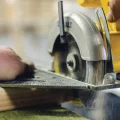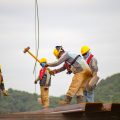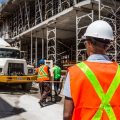Common Workplace Construction Injuries

In the bustling city of Raleigh, North Carolina, the skyline is ever-evolving, marked by towering cranes and scaffolding that signify growth and progress. As construction projects thrive, so does the need for vigilant workplace safety practices. At Kirk, Kirk Law, criminal defense attorneys in Raleigh, NC, we understand the paramount importance of safety in the construction industry.
Join our workplace personal injury lawyers as we explore the critical aspect of the workforce that often goes unnoticed until tragedy strikes– common construction injuries. In this comprehensive guide, we aim to shed light on the most common types of construction injuries that occur on construction sites, their causes, and the legal avenues available to those who have suffered due to someone else’s negligence.
Understanding Personal Injury Claims on Construction Jobs
Construction jobs are crucial to the development and infrastructure of our cities, but they can also be among the most dangerous occupations. Construction workers face various risks daily, including falls, electrical accidents, machinery mishaps, and more. When construction injuries occur due to negligence or unsafe conditions, workers have the right to pursue personal injury claims to seek compensation for their damages.
Legal Basis for Personal Injury Claims
Personal injury claims due to construction injuries are typically based on the concept of serious injuries caused by employer negligence.
To have a valid claim for a construction injury, you must establish the following elements:
- Duty of Care: The defendant (usually an employer, contractor, or another party) owed a duty of care to ensure a safe working environment.
- Breach of Duty: The defendant breached this duty by failing to maintain a safe workplace or taking necessary precautions to prevent accidents.
- Causation: The breach of duty directly caused your injury.
- Damages: You suffered physical, emotional, or financial damages as a result of the injury.
Types of Personal Injury Claims
Several types of personal injury claims can arise from workplace injuries on construction sites, including:
- Slip and Fall Injuries: Slip and fall injuries often occur due to slippery surfaces, debris, or uneven ground. Property owners or contractors may be liable if they fail to address these hazards.
- Falling Object Injuries: If you’re struck by a falling object on a construction site, you may have a claim against the party responsible for securing materials or equipment.
- Electrical Accidents: Electric shocks or burns from exposed wiring or faulty equipment can lead to personal injury claims.
- Machinery Accidents: Malfunctioning machinery, inadequate training, or lack of safety guards can result in injuries that warrant a personal injury claim.
- Exposure to Hazardous Materials: Workers exposed to toxic substances without proper protection may have grounds for a personal injury claim.
Falls from Heights
Falls from heights represent one of the most significant and life-threatening hazards when it comes to construction injuries. These accidents can result in severe injuries or fatalities, making them a major concern for both construction workers and employers.
According to the Occupational Safety and Health Administration (OSHA), such accidents consistently rank among the leading causes of construction-related fatalities:
- Falls account for a significant portion of all construction-related deaths each year.
- They are responsible for a substantial number of non-fatal injuries, often causing fractures, spinal cord damage, traumatic brain injuries, and more.
- These accidents can occur at various stages of a construction project, from initial site preparation to final finishing touches, highlighting the pervasive nature of the risk.
Causes and Contributing Factors of Falls from Heights
Understanding the causes and contributing factors behind falls from heights is crucial for effective prevention.
Some common factors include:
- Lack of Fall Protection: A primary cause is the absence of proper fall protection measures. This includes missing guardrails, safety nets, or personal protective equipment (PPE) like harnesses and lifelines.
- Unstable Working Surfaces: Uneven or unstable surfaces, such as scaffolding, ladders, or platforms that aren’t properly secured or maintained, can lead to falls.
- Human Error: Mistakes or lapses in judgment, like missteps, failing to secure oneself properly, or not following established safety protocols, can result in falls.
- Adverse Weather Conditions: Weather can play a crucial role in falls. Rain, snow, ice, or strong winds can make surfaces slippery or affect the stability of equipment.
Falling Objects
Accidents involving falling objects represent a serious and often preventable hazard in many workplaces, particularly in industries like construction, manufacturing, and warehousing. These incidents can result in severe construction injuries, including head trauma, spinal cord injuries, fractures, and even fatalities.
Falling object accidents involve objects or materials dropping from elevated surfaces, such as scaffolds, shelves, platforms, or equipment, and striking workers below.
These incidents can occur due to various factors:
- Unsecured Materials: Materials and tools left unsecured on elevated surfaces can easily fall if disturbed by vibrations, strong winds, or even accidental contact.
- Equipment Malfunction: Mechanical failures or equipment malfunctions can cause objects to become dislodged and fall.
- Human Error: Workers or equipment operators may inadvertently drop objects or fail to secure materials properly.
- Overhead Loads: Loads suspended by cranes, hoists, or other lifting equipment can pose a significant risk if not properly controlled.
Causes and Contributing Factors of Falling Objects
Falling object accidents can have several contributing factors, including:
- Lack of Barricades and Warning Signs: Failure to establish proper barricades or display warning signs in areas with falling object hazards can lead to accidents.
- Inadequate Training: Workers may not be adequately trained on proper storage and handling of materials and tools.
- Neglecting Personal Protective Equipment (PPE): Failure to provide or use appropriate PPE, such as hard hats or safety helmets, leaves workers vulnerable to falling objects.
- Poor Housekeeping: Cluttered work areas and unorganized storage can increase the risk of objects falling.
Electrical Injuries
Electricity is a powerful force that powers our modern world, but it also poses significant risks, especially in certain industries like construction. Electrical construction injuries are a genuine concern, and they can have devastating consequences.
Electrical injuries encompass a range of harm caused by exposure to electrical currents.
These construction injuries can manifest in different ways:
- Electric Shock: Direct contact with live electrical wires or equipment can lead to electric shock. The severity of the shock depends on the voltage and current involved.
- Burns: Electrical injuries often result in burns, which can vary in degree from minor to severe. Electrical burns may not always be visible on the skin’s surface, as internal tissue damage can occur.
- Cardiac Arrest: In some cases, exposure to high-voltage electrical currents can disrupt the heart’s rhythm, leading to cardiac arrest and, potentially, death.
- Neurological Damage: Electrical injuries can also damage the nervous system, leading to long-term neurological issues, including memory problems, seizures, and muscle weakness.
Causes and Contributing Factors of Electrical Injuries
Several factors can contribute to electrical construction injuries in the workplace, including:
- Faulty Equipment: Malfunctioning or poorly maintained electrical equipment and tools pose significant risks. Damaged cords, frayed wires, or faulty switches can increase the likelihood of accidents.
- Inadequate Training: Lack of proper training on electrical safety can lead to workers making unsafe choices when dealing with electricity.
- Unsafe Work Practices: Failure to follow safety protocols, such as working on live electrical systems without proper precautions, can result in injuries.
- Overloaded Circuits: Overloading circuits with too many devices or appliances can cause overheating and electrical fires.
Caught-In/Between Accidents
Caught-in/between accidents are a serious and often fatal category of workplace incidents that can occur in various industries, including construction, manufacturing, and agriculture. These construction injuries involve a worker being caught, squeezed, crushed, or trapped between objects or machinery.
These accidents can take several forms:
- Machinery Accidents: Workers may get caught in or between heavy machinery, equipment, or vehicle parts. This can result from moving machinery without proper precautions or maintenance issues.
- Trench and Excavation Accidents: In construction and excavation work, collapses or cave-ins can trap workers inside trenches or excavation sites.
- Collapse of Structures: Sudden structural collapses, such as walls, roofs, or floors, can pin workers underneath debris.
- Material Handling Accidents: Workers can be caught between materials being moved, loaded, or stacked if proper safety measures are not followed.
- Conveyors and Machinery with Moving Parts: Workers can become trapped in conveyor belts or machinery with moving parts.
Causes and Contributing Factors of Caught In/Between Accidents
Several factors contribute to caught-in/between accidents, including:
- Lack of Training: Insufficient training on equipment operation, safety protocols, and hazard recognition can lead to accidents.
- Inadequate Guarding: Missing or inadequate guarding on machinery and equipment increases the risk of workers coming into contact with moving parts.
- Unsafe Work Practices: Failure to follow safety procedures, such as lockout/tagout when servicing machinery, can result in accidents.
- Inadequate Supervision: Lack of supervision or oversight can lead to risky behaviors or shortcuts that increase the likelihood of accidents.
- Poor Maintenance: Equipment that is not properly maintained can malfunction, trapping workers.
Respiratory Issues
Respiratory issues are a significant concern in various workplaces, especially those where employees are exposed to harmful airborne substances and conditions like in the construction industry. These issues can lead to both acute and chronic health problems, making it essential for employers and workers alike to prioritize respiratory health and safety.
Respiratory issues encompass a wide range of conditions affecting the lungs and airways. Some common respiratory problems that can result from workplace exposure include:
- Occupational Asthma: This is caused or exacerbated by workplace conditions, such as exposure to dust, fumes, or chemicals.
- Lung Irritation: Exposure to irritants like smoke, fumes, or certain chemicals can lead to lung irritation and inflammation.
- Chronic Obstructive Pulmonary Disease (COPD): Long-term exposure to harmful substances, often in industries like mining or manufacturing, can contribute to the development of COPD.
- Lung Cancer: Workplace exposure to carcinogens, such as asbestos or certain chemicals, can increase the risk of lung cancer.
- Respiratory Infections: Poorly ventilated workplaces can facilitate the spread of respiratory infections like influenza or COVID-19.
Causes and Contributing Factors of Respiratory Issues
Several factors in the workplace can contribute to the development of respiratory issues when doing construction work, including:
- Airborne Pollutants: Dust, fumes, smoke, vapors, and gases released during various industrial processes can irritate the respiratory system.
- Inadequate Ventilation: Poorly ventilated workspaces can lead to a buildup of pollutants and reduce air quality.
- Lack of Protective Equipment: Failure to provide or use appropriate respiratory protective equipment, such as masks or respirators, can increase exposure risks.
- Exposure Duration: The longer a worker is exposed to harmful substances, the greater the risk of developing respiratory problems.
- Preexisting Health Conditions: Individuals with preexisting respiratory conditions may be more susceptible to workplace-related issues.
Workers’ Compensation vs. Personal Injury Claims
In many cases, injured construction workers are covered by workers’ compensation insurance, which provides benefits regardless of fault. However, workers’ comp benefits may not fully compensate you for all your losses, such as pain and suffering. In cases of severe negligence or when third parties are involved, pursuing a personal injury claim for construction injuries may be necessary to secure fair compensation.
Why Seek Legal Representation for Construction Site Injuries
Navigating personal injury claims for construction injuries can be complex, involving multiple parties, insurance companies, and legal intricacies. Hiring an experienced personal injury attorney who specializes in construction accidents can be invaluable.
The team from Kirk, Kirk Law can:
- Investigate the incident thoroughly to establish liability.
- Calculate the full extent of your damages, including medical bills, lost wages, pain, and suffering.
- Negotiate with insurance companies or pursue litigation if necessary to secure fair compensation.
Personal injury claims on construction jobs are a means for injured workers to seek justice and recover their losses when negligence or unsafe conditions lead to accidents. If you’ve been injured on a construction site, consulting with a skilled and experienced attorney can help you understand your rights and options for pursuing a claim. Your safety and well-being are paramount, and the law is on your side when it comes to holding responsible parties accountable for their actions.
Contact Our Worker’s Compensation Attorneys in Raleigh Today
Facing a workplace construction injury is tough, but you don’t have to go through it alone. Our Raleigh-based worker’s compensation attorneys from Kirk, Kirk, Howell, Cutler, & Thomas, LLC are ready to assist you. By reaching out today, you protect your rights, navigate the legal process, maximize benefits, and find peace of mind as you recover from your construction accident injuries.
Get started today by calling us at [phone] to set up a consultation and case review or fill out the contact form below to get started.
Workers’ Compensation - Case Review













